What's With the Beard?
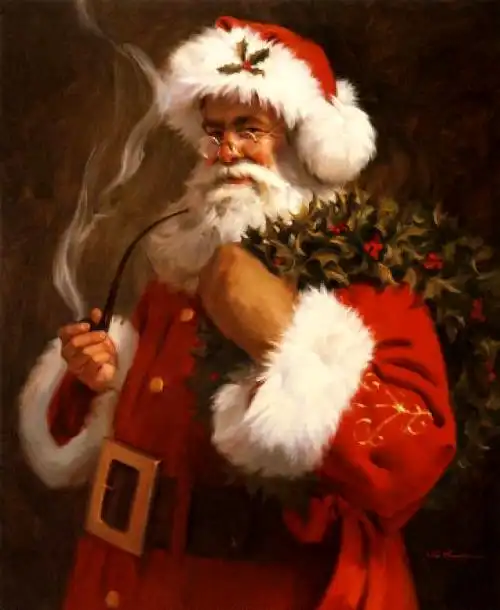
Speculations by Stefan Stenudd
Soon, Santa Claus will sneak down the chimney with presents to all good children, with a jolly Ho, ho, ho! That's all fine. But what's with that big white beard?
Novel by Stefan Stenudd
A Sunday brunch conversation with a stranger slips into the mysterious, soon to burst beyond the realm of possibility. Click the image to see the book at Amazon (paid link).
|
The myth about that jolly fellow evolved in the 19th century, as did the image of him. According to
Wikipedia, it sort of started in 1823 with a poem by Clement Clarke Moore,
A Visit from St. Nicholas. It can be found in its original version
here. The first few lines read:
'Twas the night before Christmas, when all thro' the house,
Not a creature was stirring, not even a mouse;
The stockings were hung by the chimney with care,
In hopes that St. Nicholas soon would be there
It contains all the now well-known components the reindeer, the chimney, the toys to the children, and so on.
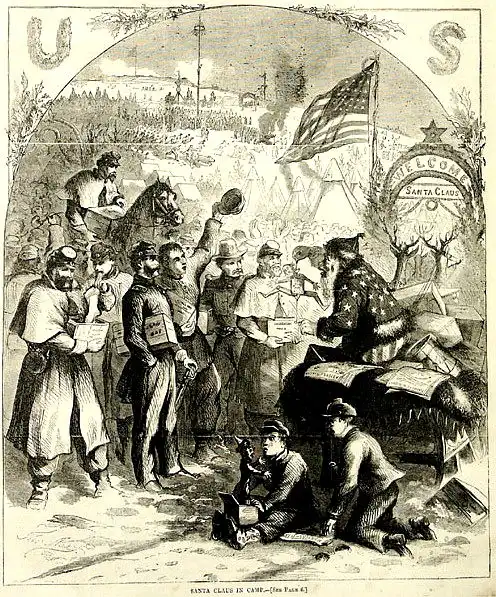
Santa Claus, by Thomas Nast 1863.
The image of Santa Claus is said to have been shaped by the cartoonist Thomas Nast in 1863, when he changed the common depiction from a tall and thin man to the obese charmer we know today. Thomas Nast made several pictures over the years to follow, where Santa's characteristics became more and more accentuated, in line with how caricatures evolve.
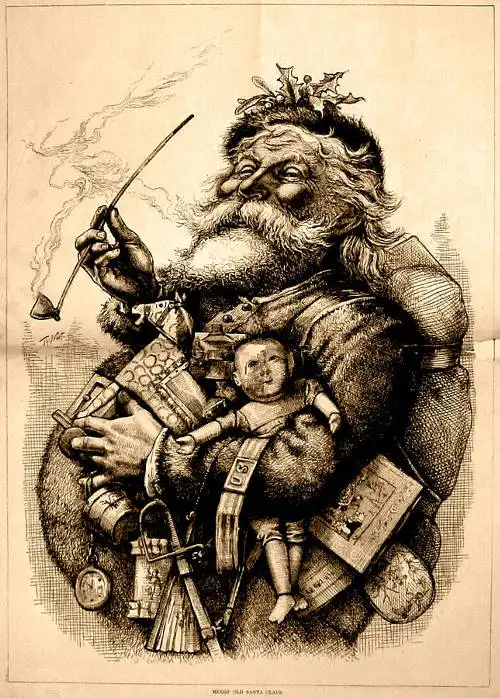
Santa Claus, by Thomas Nast 1881.
The Santa image got a boost in a 1930s Coca-Cola campaign with pictures of Santa Claus made by Haddon Sundblom. Through Sundblom's brush, Santa's costume received its distinctly red color and his beard got that fuzzy and white, as if it was nothing but the false beard worn by so many impersonators in the shopping malls.
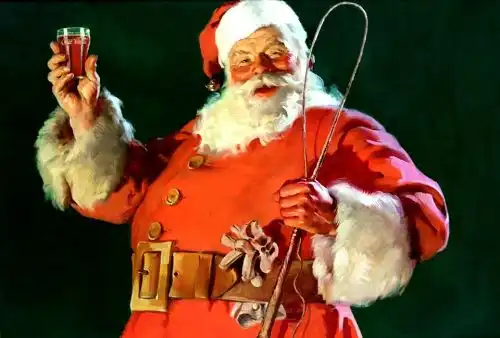
Santa Claus, by Haddon Sundblom.
But the big beard is far from unique on Santa Claus. It's carried by several other mythological figures and it tends to be bigger, the more prominent they are.
Starting from the top, there's the traditional Christian image of God. When given human features, he always gets an impressive beard, not at all that far from Santa's.
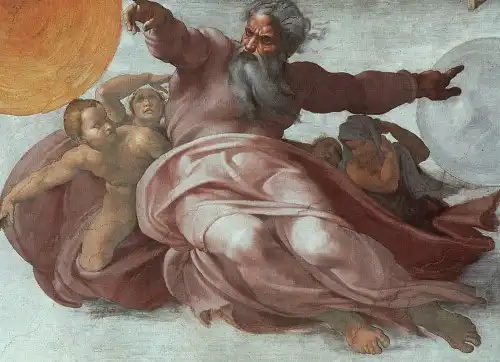
God, by Michelangelo.
Among the gods, he's far from the only one to have a big beard. It seems to be the rule more than the exception. Already Zeus of Ancient Greek mythology was very bearded indeed.
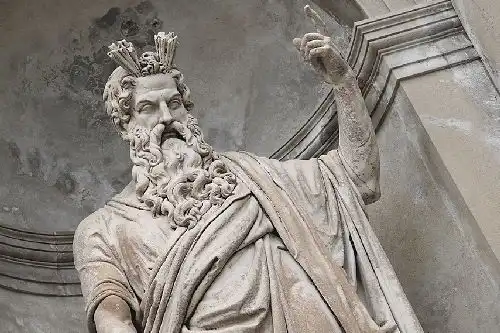
Zeus.
Before him, the Babylonian god Marduk had a beard that was neatly trimmed into a rectangle, but not shorter than with what later divinities paraded.
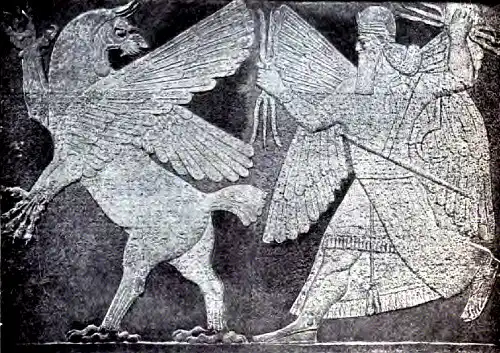
Marduk chasing Tiamat.
Myth sticks to the beard as a necessary attribute for characters of height and distinction. Gandalf of Tolkien's tale obviously never shaved, and in his transformation from the Grey to the White the color of his beard followed.
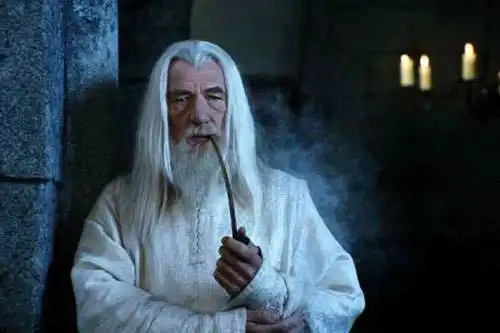
Gandalf.
The most recent example is a sort of Gandalf wanna-be, the headmaster of Harry Potter's school of magic, Dumbledore, who was vain enough to arrange his beard in a decorative way, as if wanting still to distance himself in some way from his predecessors.
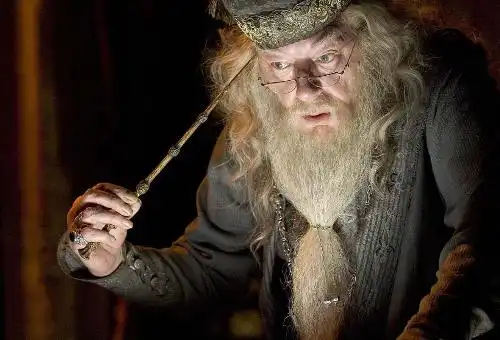
Dumbledore.
Jesus, too, is depicted with long hair and a beard. But in his case, the beard might be blond but never white, and it's significantly shorter than that of his father and the other characters mentioned above.
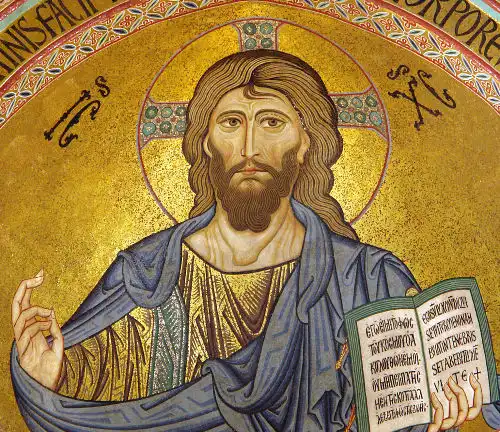
Jesus.
Could this shortcoming of his depend on him being the son and not the father? The length of his beard, and the neatness of it, implies youth. The beard of a divine adolescent, not a fully grown god.
Since ancient times, the beard is a sign of maturity and authority, maybe also of power. Jesus, son of a carpenter, walked among common men like one of them, and was no older than 33 when he was executed an unthinkable fate for a man of senior power. Had his beard been longer, he might have been spared...
A legendary example of the link between hair and power is that of Samson, who loses his phenomenal strength when his hair is cut, by trickery of the beautiful Delilah. Although the bible text doesn't seem to say so, I'd like to think that his beard was also cut in the process. His beard must have been the hair holding his power.
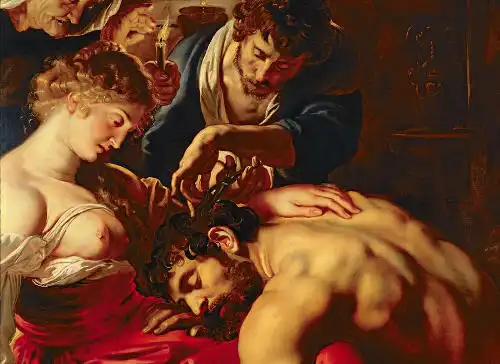
Samson and Delilah, by Rubens.
Something similar is implied by the fact that it's on Santa's beard we swear, when we really mean it. That's where his power lies.
Santa Claus sure needs a lot of power for the fantastic feat he performs every Christmas, bringing presents to all the children of the world who have not been too naughty. He needs that beard. Without it, he would not accomplish much and we would sit by the chimneys, waiting and waiting for nothing.
So, praise the beard guaranteeing a very merry Christmas!
PS
Here is another essay of mine about beards:
When the Bearded Lady Sings
Stefan Stenudd
December 23, 2011
My Other Websites
Myths in general and myths of creation in particular.
The wisdom of Taoism and the
Tao Te Ching, its ancient source.
An encyclopedia of life energy concepts around the world.
Qi (also spelled
chi or
ki) explained, with exercises to increase it.
The ancient Chinese system of divination and free online reading.
Tarot card meanings in divination and a free online spread.
The complete horoscope chart and how to read it.

Stefan Stenudd
About me
I'm a Swedish author of fiction and non-fiction books in both English and Swedish. I'm also an artist, a historian of ideas, and a 7 dan Aikikai Shihan aikido instructor. Click the header to read my full bio.











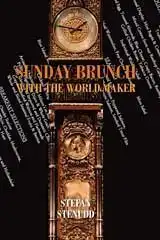 Sunday Brunch with the World Maker
Sunday Brunch with the World Maker